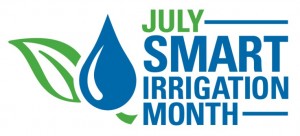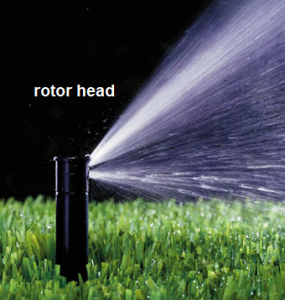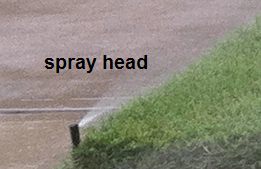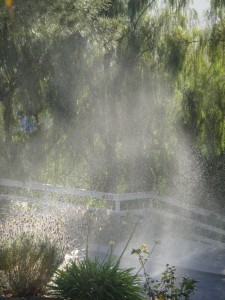 So we’re still in July and still talking about automatic irrigation systems for Smart Irrigation Month. It’s seems this week summer has hit (again), maybe “for real” this time, so an efficient irrigation system is more important than ever.
So we’re still in July and still talking about automatic irrigation systems for Smart Irrigation Month. It’s seems this week summer has hit (again), maybe “for real” this time, so an efficient irrigation system is more important than ever.
I’m going to continue the same topic as last time, which is upgrading your irrigation system when necessary. We talked about sensors last week. This week I’d like to focus on sprinkler heads and water pressure. The type of sprinkler head being used determines several things, like how long to water, where to locate the heads, and also how much water is being emitted and, most importantly, how well that water is being used by your landscape.
There are two main types of sprinkler heads-spray heads and rotor (or rotatory) heads. Both are usually located underground and pop-up when it’s their time to water. 
The spray heads are the ones that water the same piece of grass, or landscaping, the entire time they are popped up. Rotor heads rotate to the left and right when they pop-up and do not water the same place the entire time they are popped up. See the pictures on the right for what each look like.
Rotor heads are the more efficient of the two head types. Tests have shown that the water is distributed more evenly by rotor heads than spray heads. The same amount of water is being emitted close to the head as midway as at the furthest end of the water. Usually people want to replace rotors with sprays, but I urge them not to. Again, they are more efficient than traditional spray heads. They emit, on average gallons of water per minute. Rotor heads are desirable to use in large areas-fewer heads are required to cover a large space since they spray water out a further distance than spray heads.
Traditional spray heads are not quite as efficient, mainly due to variations in water pressure and head spacing (specifically heads placed too far apart). Misting is pretty commonly seen with spray heads-this is lots of “clouding” coming off the heads. This cloud, or misting, is water drops that are so small they are just floating away into the air, rather than going down onto the landscape. (See the picture, all that stuff in the air above the plants is the water droplets from the irrigation system). You are paying for this water and it’s just floating away. Not good. This means you have to run the system for a longer time to get water down onto the ground, which will get expensive and is just wasteful. This is caused by water pressure that is too high.
An aside here, “good” or appropriate water pressure for irrigation systems is between 30-50 psi. 
High pressure can be remedied in two main ways: installing a pressure reducing valve (PRV) on the irrigation system, or replacing the nozzles with ones that adjust or compensate for the high water pressure. So…which is better? That’s a hard question to give a quick answer for.
The PRV is a good fix if the entire irrigation system is running with high pressure. It’s one device that is installed near the backflow prevention device in your yard. A licensed irrigator should be contacted to install this device.
Replacing nozzles is a great way to fine-tune the irrigation system; here, you can just replace nozzles in the zones that have the high misting. This is a little more time consuming because you need to find and purchase the correct nozzle types (full circle, half circle, etc) and then physically unscrew the old nozzles and screw on the new ones, but overall it’s pretty inexpensive. Of course, a licensed irrigator can be hired to do this work as well. There are several brands of nozzles that have built-in pressure compensation and can be ordered online or found in local irrigation stores.
Both of these types of pressure reducing efficiency qualify for the City’s Efficient Irrigation Rebate program. I highly encourage you to take advantage of it if you notice misting in your irrigation system!


